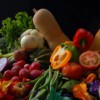 This 12-page fact sheet lists many of the common insecticides currently labeled for use on vegetables in Florida. A number of new materials have been registered in the past few years or have had additional crops added to their labels. Some older organophosphate insecticides are now restricted to just a few crops, a result of recent rulings related to the Food Quality Protection Act. Changes continue, thus this listing may not be totally accurate at the time of printing. Written by S. E. Webb and P. A. Stansly, and published by the UF Department of Entomology and Nematology, August 2012.
This 12-page fact sheet lists many of the common insecticides currently labeled for use on vegetables in Florida. A number of new materials have been registered in the past few years or have had additional crops added to their labels. Some older organophosphate insecticides are now restricted to just a few crops, a result of recent rulings related to the Food Quality Protection Act. Changes continue, thus this listing may not be totally accurate at the time of printing. Written by S. E. Webb and P. A. Stansly, and published by the UF Department of Entomology and Nematology, August 2012.
http://edis.ifas.ufl.edu/ig018
Category: Crops
Estimacion de costos de establecimiento y produccion de papaya en el sur de la Florida en 2012 (FE920)
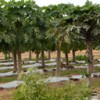 El alza reciente en los precios de la papaya, consecuencia de las restricciones fitosanitarias impuestas a la fruta proveniente de México, ha despertado el interés de productores en el Sur de la Florida, quienes han percibido la oportunidad de suplir la demanda por papaya madura en los Estados Unidos. No obstante, hay mucha incertidumbre con respecto a la viabilidad económica del negocio. El objetivo de este documento es proveer información acerca del retorno económico y los costos de producción de un cultivo de 5 acres de papaya en el Sur de la Florida. Igualmente, se evaluaron precios y rendimientos que permitirían que el negocio fuese rentable en el Sur de Florida. This 7-page fact sheet was written by Edward A. Evans, Fredy H. Ballen, y Jonathan H. Crane, and published by the UF Department of Food and Resource Economics, February 2013.
El alza reciente en los precios de la papaya, consecuencia de las restricciones fitosanitarias impuestas a la fruta proveniente de México, ha despertado el interés de productores en el Sur de la Florida, quienes han percibido la oportunidad de suplir la demanda por papaya madura en los Estados Unidos. No obstante, hay mucha incertidumbre con respecto a la viabilidad económica del negocio. El objetivo de este documento es proveer información acerca del retorno económico y los costos de producción de un cultivo de 5 acres de papaya en el Sur de la Florida. Igualmente, se evaluaron precios y rendimientos que permitirían que el negocio fuese rentable en el Sur de Florida. This 7-page fact sheet was written by Edward A. Evans, Fredy H. Ballen, y Jonathan H. Crane, and published by the UF Department of Food and Resource Economics, February 2013.
http://edis.ifas.ufl.edu/fe920
Regulatory and Market Risk Factors and the Emissions Reduction Potential for Energy Intensive Firms (FE919)
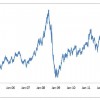 In the last decade, one of the major global environmental concerns has been greenhouse gas emissions. As part of the political debate over climate change, various policy initiatives are being proposed. Energy intensive firms that emit large amounts of greenhouse gases (e.g., floriculture or nursery firms with heated greenhouses) will be operating in an environment of high regulatory and market uncertainties in the coming years. This 3-page fact sheet presents a brief introduction of the regulatory and market risks faced by energy intensive firms and a case study of emissions reduction potential in the horticulture industry. Written by Zhengfei Guan, and published by the UF Department of Food and Resource Economics, March 2013.
In the last decade, one of the major global environmental concerns has been greenhouse gas emissions. As part of the political debate over climate change, various policy initiatives are being proposed. Energy intensive firms that emit large amounts of greenhouse gases (e.g., floriculture or nursery firms with heated greenhouses) will be operating in an environment of high regulatory and market uncertainties in the coming years. This 3-page fact sheet presents a brief introduction of the regulatory and market risks faced by energy intensive firms and a case study of emissions reduction potential in the horticulture industry. Written by Zhengfei Guan, and published by the UF Department of Food and Resource Economics, March 2013.
http://edis.ifas.ufl.edu/fe919
La Seguridad en la Produccion de Alimentos en la Granja: Buenas Practicas Agricolas y Buenas Practicas de Manejo series
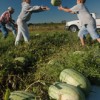 Las Buenas Prácticas Agrícolas (BPA) y las Buenas Prácticas de Manejo (BPM) abarcan los procedimientos generales que los productores, empacadores y procesadores de frutas y verduras frescas deben seguir para garantizar la seguridad de sus productos. Las BPA son usadas antes de la cosecha (es decir, en el campo), mientras que las BPM se utilizan luego de la cosecha, incluyendo el empaque y envío. Esta serie se centra en aspectos específicos del programa de BPA y cómo se relacionan con los cultivos y las prácticas de la Florida.
Las Buenas Prácticas Agrícolas (BPA) y las Buenas Prácticas de Manejo (BPM) abarcan los procedimientos generales que los productores, empacadores y procesadores de frutas y verduras frescas deben seguir para garantizar la seguridad de sus productos. Las BPA son usadas antes de la cosecha (es decir, en el campo), mientras que las BPM se utilizan luego de la cosecha, incluyendo el empaque y envío. Esta serie se centra en aspectos específicos del programa de BPA y cómo se relacionan con los cultivos y las prácticas de la Florida.
This series of fact sheets was written by Federico G. Caro, Alexandra Chang, Renée Goodrich-Schneider, y Keith R. Schneider, and published by the UF Department of Food Science and Human Nutrition, February 2013.
http://edis.ifas.ufl.edu/topic_series_spa_food_safety_on_the_farm
- Sanidad en las Instalaciones de Empaque (FSHN1205S/FS219)
http://edis.ifas.ufl.edu/fs219 - Salud e Higiene de los Trabajadores (FSHN1010S/FS220)
http://edis.ifas.ufl.edu/fs220 - Sanidad en el Campo (FSHN1012S/FS221)
http://edis.ifas.ufl.edu/fs221
A Postharvest Fruit Rot Caused by Alternaria sp. on Imported Plum Tomatoes in South Florida (PP303)
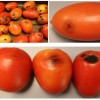 Florida’s deep-water ports are ideal for importing many fruits and vegetables, including tomatoes, by ship from the Caribbean as well as Central and South American production areas. These imports are often strictly regulated for pests, but some pathogens still escape quarantine. This 3-page fact sheet describes a postharvest problem on plum tomatoes that were imported from Mexico through South Florida in 2010. Alternaria sp. was isolated from lesions on diseased fruits, pathogenicity tests were conducted on healthy fruits, and symptoms identical to the originally submitted samples were developed. Written by Zelalem Mersha, Shouan Zhang,and Jerry A. Bartz, and published by the UF Department of Plant Pathology, January 2013.
Florida’s deep-water ports are ideal for importing many fruits and vegetables, including tomatoes, by ship from the Caribbean as well as Central and South American production areas. These imports are often strictly regulated for pests, but some pathogens still escape quarantine. This 3-page fact sheet describes a postharvest problem on plum tomatoes that were imported from Mexico through South Florida in 2010. Alternaria sp. was isolated from lesions on diseased fruits, pathogenicity tests were conducted on healthy fruits, and symptoms identical to the originally submitted samples were developed. Written by Zelalem Mersha, Shouan Zhang,and Jerry A. Bartz, and published by the UF Department of Plant Pathology, January 2013.
http://edis.ifas.ufl.edu/pp303
Proper Calibration of Soil Fumigant Application Equipment (ENY047/IN404)
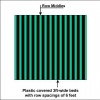 Calibration of soil fumigant equipment and determination of soil fumigant application rate are two of the most important factors contributing to the success or failure of pest control efficacy and crop production response, yet generate some of the greatest confusion among many researchers and growers alike. This 5-page fact sheet was written by J.W. Noling, and published by the UF Department of Entomology and Nematology, December 2012.
Calibration of soil fumigant equipment and determination of soil fumigant application rate are two of the most important factors contributing to the success or failure of pest control efficacy and crop production response, yet generate some of the greatest confusion among many researchers and growers alike. This 5-page fact sheet was written by J.W. Noling, and published by the UF Department of Entomology and Nematology, December 2012.
http://edis.ifas.ufl.edu/in404
Interpretacion del contenido de la humedad del suelo para determinar capacidad de campo y evitar riego excesivo en suelos arenosos utilizando sensores de humedad (AE496)
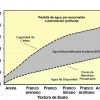 Este documento resume las directrices para la determinación de la capacidad de campo y la programación óptima del riego para suelos arenosos utilizando sensores de medición de la humedad del suelo (SHS). Los sensores de humedad del suelo han demostrado potencial para el monitoreo de la humedad del suelo, y para el respaldo en la toma de decisiones de riego en cultivos hortícolas. This 4-page fact sheet was written by Lincoln Zotarelli, Michael D. Dukes, y Kelly T. Morgan, and published by the UF Department of Agricultural and Biological Engineering, January 2013.
Este documento resume las directrices para la determinación de la capacidad de campo y la programación óptima del riego para suelos arenosos utilizando sensores de medición de la humedad del suelo (SHS). Los sensores de humedad del suelo han demostrado potencial para el monitoreo de la humedad del suelo, y para el respaldo en la toma de decisiones de riego en cultivos hortícolas. This 4-page fact sheet was written by Lincoln Zotarelli, Michael D. Dukes, y Kelly T. Morgan, and published by the UF Department of Agricultural and Biological Engineering, January 2013.
http://edis.ifas.ufl.edu/ae496
Field Observations During the Ninth Microwave Water and Energy Balance Experiment (MicroWEX-9): from March 24, 2010 through January 6, 2011 (AE494)
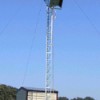 The goal of MicroWEX-9 was to conduct a season-long experiment that incorporated passive microwave observations as well as Light Detection and Ranging (LiDAR) observations for a growing season of elephant grass. The variety of sensors would allow for further understanding of the land-atmosphere interactions during the growing season, and their effect on observed passive microwave signatures at 6.7 GHz and 1.4 GHz, as well as LiDAR scans. This 72-page fact sheet was written by Tara Bongiovanni, Pang-Wei Liu, Karthik Nagarajan, Robert Terwilleger, Alejandro Monsivais-Huertero, Jasmeet Judge, Juan Fernandez-Diaz, Daniel Preston, Tyler Cheney, Jason Motsinger, and published by the UF Department of Agricultural and Biological Engineering, January 2013.
The goal of MicroWEX-9 was to conduct a season-long experiment that incorporated passive microwave observations as well as Light Detection and Ranging (LiDAR) observations for a growing season of elephant grass. The variety of sensors would allow for further understanding of the land-atmosphere interactions during the growing season, and their effect on observed passive microwave signatures at 6.7 GHz and 1.4 GHz, as well as LiDAR scans. This 72-page fact sheet was written by Tara Bongiovanni, Pang-Wei Liu, Karthik Nagarajan, Robert Terwilleger, Alejandro Monsivais-Huertero, Jasmeet Judge, Juan Fernandez-Diaz, Daniel Preston, Tyler Cheney, Jason Motsinger, and published by the UF Department of Agricultural and Biological Engineering, January 2013.
http://edis.ifas.ufl.edu/ae494
Diagnosing Herbicide Injury in Corn (SSAGR365/AG374)
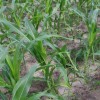 This 9-page fact sheet lists nine modes of action: the mechanism of action, behavior in plants, symptoms and herbicides, and illustrations. Written by Sarah Berger, Jason Ferrell, and Peter Dittmar, and published by the UF Department of Agronomy, January 2013.
This 9-page fact sheet lists nine modes of action: the mechanism of action, behavior in plants, symptoms and herbicides, and illustrations. Written by Sarah Berger, Jason Ferrell, and Peter Dittmar, and published by the UF Department of Agronomy, January 2013.
http://edis.ifas.ufl.edu/ag374
Amaryllis Lesion Nematode, Pratylenchus hippeastri Inserra et al., 2006 (Nematoda: Tylenchida: Pratylenchidae) (EENY546/IN975)
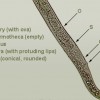 Amaryllis lesion nematode is an important nematode pest of amaryllis in Florida. It reduces plant vigor, flower yield, and bulb size. As the nematodes tunnel through the root, the damaged cells die and collapse, forming lesions on the exterior and the interior of the root tissue. This 4-page fact sheet was written by William T. Crow, and published by the UF Department of Entomology and Nematology, January 2013.
Amaryllis lesion nematode is an important nematode pest of amaryllis in Florida. It reduces plant vigor, flower yield, and bulb size. As the nematodes tunnel through the root, the damaged cells die and collapse, forming lesions on the exterior and the interior of the root tissue. This 4-page fact sheet was written by William T. Crow, and published by the UF Department of Entomology and Nematology, January 2013.
http://edis.ifas.ufl.edu/in975
Causes and Management of Insect and Mite Resistance in Strawberry Production (ENY841/IN713)
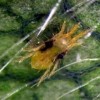 Episodes of pest resistance to popular pesticides can cause yield losses, reduction of fruit quality, added control costs, environmental degradation, and emotional stress among farmers. These consequences can be alleviated if resistance management is practiced throughout the strawberry industry. If they minimize pesticide application by depending more on biological and cultural pest control measures, and take care not to expose pest populations to pesticides with identical modes of action, growers can avoid causing pesticide resistance. This 8-page fact sheet was written by James F. Price and Curtis Nagle, and published by the UF Department of Entomology and Nematology, November 2012.
Episodes of pest resistance to popular pesticides can cause yield losses, reduction of fruit quality, added control costs, environmental degradation, and emotional stress among farmers. These consequences can be alleviated if resistance management is practiced throughout the strawberry industry. If they minimize pesticide application by depending more on biological and cultural pest control measures, and take care not to expose pest populations to pesticides with identical modes of action, growers can avoid causing pesticide resistance. This 8-page fact sheet was written by James F. Price and Curtis Nagle, and published by the UF Department of Entomology and Nematology, November 2012.
http://edis.ifas.ufl.edu/in713
Biology and Control of Sorghum-almum in Sugarcane (SSAGR369/SC098)
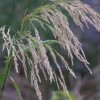 Sorghum-almum is a weak, perennial rhizomatous grass. Leaves of seedlings are rolled in a bud with a fringed membranous ligule. Seedlings often resemble corn seedlings when small. Stems of mature plants are stout and erect, reaching up to 14 feet tall. Leaf blades are flat and sandpapery. Sorghum-almum is commonly found in the southern part of Florida in sugarcane fields and along ditches, canals, and roadsides. This 3-page fact sheet was written by Dennis Calvin Odero, Ron Rice, and Les Baucum , and published by the UF Department of Agronomy, January 2013.
Sorghum-almum is a weak, perennial rhizomatous grass. Leaves of seedlings are rolled in a bud with a fringed membranous ligule. Seedlings often resemble corn seedlings when small. Stems of mature plants are stout and erect, reaching up to 14 feet tall. Leaf blades are flat and sandpapery. Sorghum-almum is commonly found in the southern part of Florida in sugarcane fields and along ditches, canals, and roadsides. This 3-page fact sheet was written by Dennis Calvin Odero, Ron Rice, and Les Baucum , and published by the UF Department of Agronomy, January 2013.
http://edis.ifas.ufl.edu/sc098
Biology and Control of Horse Purslane and Common Purslane in Sugarcane (SSAGR368/SC097)
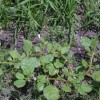 Horse purslane and common purslane are broadleaf weeds associated with sugarcane fields in muck (organic) and mineral soils of South Florida. Growers often confuse these two weed species with each other. However, these two species have distinct phylogenetic (evolutionary) and morphological differences. This 4-page fact sheet was written by Dennis Calvin Odero, Ron Rice, and Les Baucum, and published by the UF Department of Agronomy, January 2013.
Horse purslane and common purslane are broadleaf weeds associated with sugarcane fields in muck (organic) and mineral soils of South Florida. Growers often confuse these two weed species with each other. However, these two species have distinct phylogenetic (evolutionary) and morphological differences. This 4-page fact sheet was written by Dennis Calvin Odero, Ron Rice, and Les Baucum, and published by the UF Department of Agronomy, January 2013.
http://edis.ifas.ufl.edu/sc097
Biology and Control of Goosegrass in Sugarcane (SSAGR367/SC096)
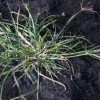 Goosegrass is an annual plant that produces a prostrate, mat-like rosette with flattened stems radiating from a central point. It is often described as looking like someone has stepped in the middle of the plant, flattening it out. Because of the whitish to translucent color of the leaf sheath margins, goosegrass usually appears white to silver; this is why it is known as white or silver crabgrass. Goosegrass is found year-round in southern Florida and is commonly associated with newly planted and stubble (ratoon) sugarcane fields. This 3-page fact sheet was written by Dennis Calvin Odero, Ron Rice, and Les Baucum, and published by the UF Department of Agronomy, January 2013.
Goosegrass is an annual plant that produces a prostrate, mat-like rosette with flattened stems radiating from a central point. It is often described as looking like someone has stepped in the middle of the plant, flattening it out. Because of the whitish to translucent color of the leaf sheath margins, goosegrass usually appears white to silver; this is why it is known as white or silver crabgrass. Goosegrass is found year-round in southern Florida and is commonly associated with newly planted and stubble (ratoon) sugarcane fields. This 3-page fact sheet was written by Dennis Calvin Odero, Ron Rice, and Les Baucum, and published by the UF Department of Agronomy, January 2013.
http://edis.ifas.ufl.edu/sc096
Biology and Control of Coast Cockspur in Sugarcane (SSAGR366/SC095)
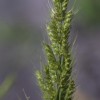 Coast cockspur is a relative of barnyardgrass that is native to North America. In South Florida, coast cockspur typically begins to infest sugarcane during the onset of rainfall in late spring. This 2-page fact sheet was written by Dennis Calvin Odero, Ron Rice, and Les Baucum, and published by the UF Department of Agronomy, January 2013.
Coast cockspur is a relative of barnyardgrass that is native to North America. In South Florida, coast cockspur typically begins to infest sugarcane during the onset of rainfall in late spring. This 2-page fact sheet was written by Dennis Calvin Odero, Ron Rice, and Les Baucum, and published by the UF Department of Agronomy, January 2013.
http://edis.ifas.ufl.edu/sc095
Late Blight of Potato and Tomato (PP301)
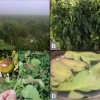 Both potato and tomato are susceptible to late blight, an aggressive disease capable of rapidly destroying entire fields. The disease is distributed worldwide and occurs wherever tomatoes or potatoes are grown and conditions favor disease development. This 4-page fact sheet was written by Ryan Donahoo and Pamela Roberts, and published by the UF Department of Plant Pathology, December 2012.
Both potato and tomato are susceptible to late blight, an aggressive disease capable of rapidly destroying entire fields. The disease is distributed worldwide and occurs wherever tomatoes or potatoes are grown and conditions favor disease development. This 4-page fact sheet was written by Ryan Donahoo and Pamela Roberts, and published by the UF Department of Plant Pathology, December 2012.
http://edis.ifas.ufl.edu/pp301
Using Tensiometers for Vegetable Irrigation Scheduling in Miami-Dade County (ABE326/TR015)
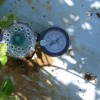 A tensiometer is a simple and relatively inexpensive tool that can be used to schedule irrigation in Miami-Dade County vegetable crops. Tensiometers continuously measure soil water potential or tension. If the tension in the soil is high, plants have to use more energy to extract soil water. If tension in the soil is low, then plants have lower energy requirements to extract soil water. This 6-page fact sheet was written by Kati W. Migliaccio, Teresa Olczyk, Yuncong Li, Rafael Muñoz-Carpena, and Tina Dispenza, and published by the UF Department of Agricultural and Biological Engineering, December 2012.
A tensiometer is a simple and relatively inexpensive tool that can be used to schedule irrigation in Miami-Dade County vegetable crops. Tensiometers continuously measure soil water potential or tension. If the tension in the soil is high, plants have to use more energy to extract soil water. If tension in the soil is low, then plants have lower energy requirements to extract soil water. This 6-page fact sheet was written by Kati W. Migliaccio, Teresa Olczyk, Yuncong Li, Rafael Muñoz-Carpena, and Tina Dispenza, and published by the UF Department of Agricultural and Biological Engineering, December 2012.
http://edis.ifas.ufl.edu/tr015
2013 Florida Blueberry Integrated Pest Management Guide (HS1156/HS380)
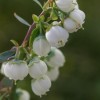 Recommendations are based on information from the manufacturer’s label and performance data from research and Extension field tests. This 31-page pest management guide was adapted for Florida by Jeffrey G. Williamson, Philip F. Harmon, Oscar E. Liburd, and Peter Dittmar, from the Southeast Regional Blueberry Integrated Management Guide, and published by the UF Department of Horticultural Sciences, November 2012.
Recommendations are based on information from the manufacturer’s label and performance data from research and Extension field tests. This 31-page pest management guide was adapted for Florida by Jeffrey G. Williamson, Philip F. Harmon, Oscar E. Liburd, and Peter Dittmar, from the Southeast Regional Blueberry Integrated Management Guide, and published by the UF Department of Horticultural Sciences, November 2012.
http://edis.ifas.ufl.edu/hs380
Identification and Control of Southern Sandbur (Cenchrus echinatus L.) in Hayfields (SSAGR364/AG373)
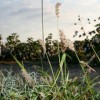 Southern sandbur is an annual grass that grows in pastures and cropland throughout the warm areas of the southern United States from Virginia to California. This native grass is adapted to dry, sandy soils and has a shallow, fibrous root system. It can easily invade a poorly managed field, diminishing the quality of a hay crop or grazing pasture. Southern sandbur seeds start to germinate in late spring, and germination continues through the summer and fall. Flowering occurs in late fall, and growth is consistent until the first frost. This 2-page fact sheet was written by Hunter Smith, Jason Ferrell, and Brent Sellers, and published by the UF Department of Agronomy, December 2012.
Southern sandbur is an annual grass that grows in pastures and cropland throughout the warm areas of the southern United States from Virginia to California. This native grass is adapted to dry, sandy soils and has a shallow, fibrous root system. It can easily invade a poorly managed field, diminishing the quality of a hay crop or grazing pasture. Southern sandbur seeds start to germinate in late spring, and germination continues through the summer and fall. Flowering occurs in late fall, and growth is consistent until the first frost. This 2-page fact sheet was written by Hunter Smith, Jason Ferrell, and Brent Sellers, and published by the UF Department of Agronomy, December 2012.
http://edis.ifas.ufl.edu/ag373
2012 Cost Estimates of Establishing and Producing Papaya (Carica papaya) in South Florida (FE918)
 With the recent spike in papaya prices due to phytosanitary restrictions on papayas from Mexico, many growers in South Florida are considering getting back into papaya production to target the ripe papaya market. Still, there are a lot of concerns as to whether the crop can be profitable in light of declining yields. Based on this discussion, the objective of this article is to provide needed information on the costs and returns associated with establishing and operating a five-acre papaya orchard in South Florida, and to assess the prices and yields that must be obtained to make a papaya orchard profitable. This 5-page fact sheet was written by Edward A. Evans, Fredy H. Ballen, and Jonathan H. Crane, and published by the UF Department of Food and Resource Economics, December 2012.
With the recent spike in papaya prices due to phytosanitary restrictions on papayas from Mexico, many growers in South Florida are considering getting back into papaya production to target the ripe papaya market. Still, there are a lot of concerns as to whether the crop can be profitable in light of declining yields. Based on this discussion, the objective of this article is to provide needed information on the costs and returns associated with establishing and operating a five-acre papaya orchard in South Florida, and to assess the prices and yields that must be obtained to make a papaya orchard profitable. This 5-page fact sheet was written by Edward A. Evans, Fredy H. Ballen, and Jonathan H. Crane, and published by the UF Department of Food and Resource Economics, December 2012.
http://edis.ifas.ufl.edu/fe918